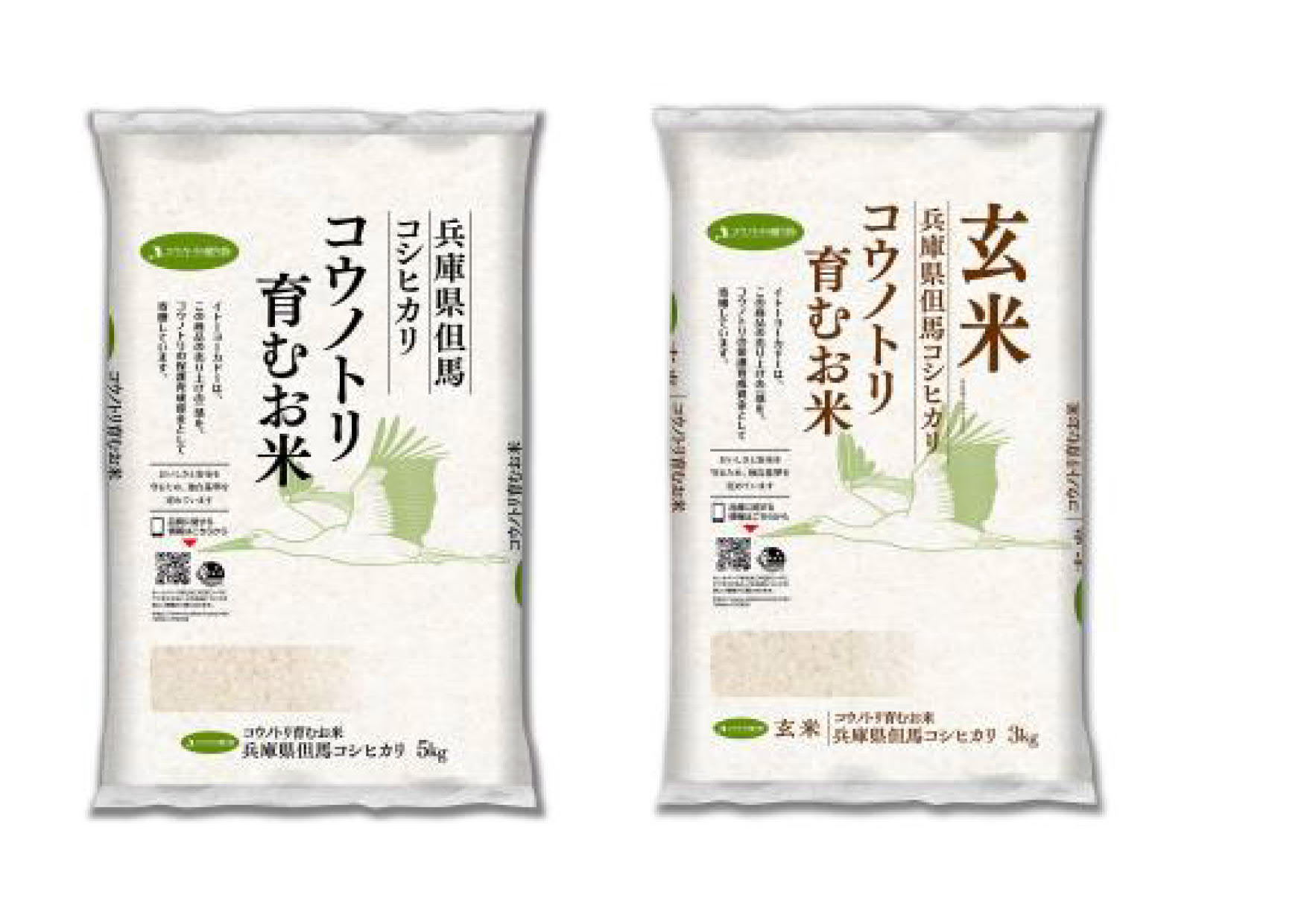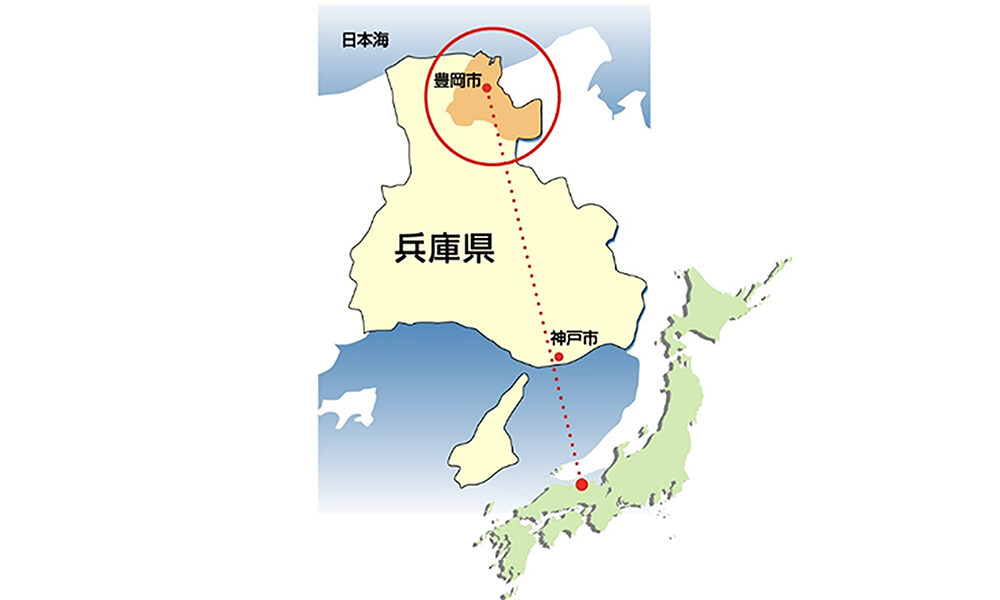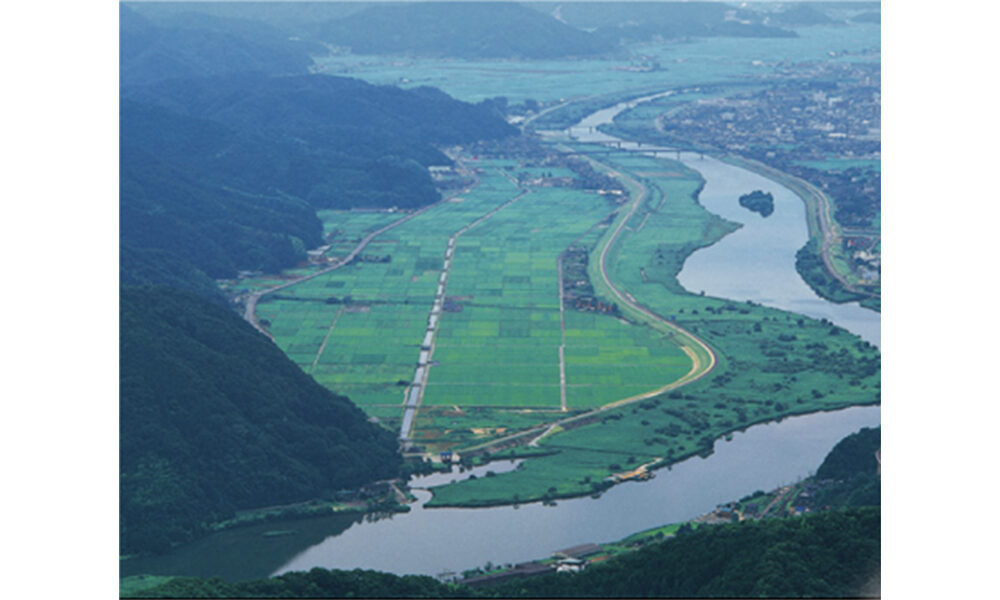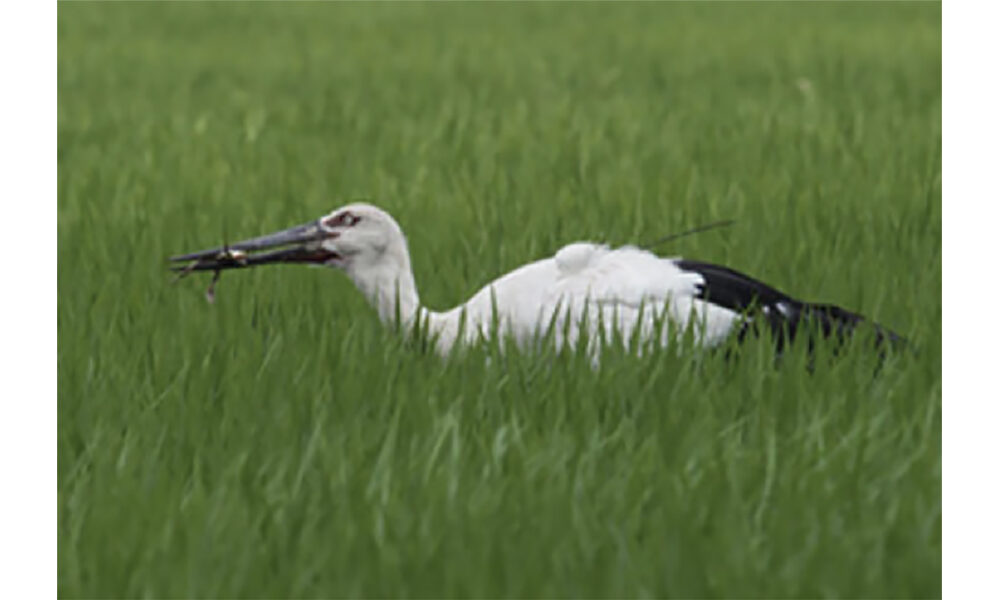
Stork Natural Rice
Mitsui & Co.Agri Foods Ltd. and “Stork Natural Rice”
As a pillar of stork wild return activities, JA Tajima (Toyooka-city , Hyogo) and local rice producers have been engaged in initiatives to grow rice in a manner that harmonizes with nature. Rice fields serve as important feeding areas for oriental storks. In order to maintain the ecosystem, which includes water paddies and satoyama (areas between mountain foothills and arable flat land), and feeding areas for oriental storks, we sell Stork Natural Rice, which is grown without the use of agricultural chemicals or chemical fertilizers.

Summary of activities by local communities
In Toyooka-shi, located in northeast Hyogo Prefecture, efforts are underway to return oriental storks (konotori) to the wild. The Oriental White Stork, which had not been seen in the wild in Japan since September 2005, has once again begun to grace the skies of Toyooka after having been artificially bred for more than forty years. Having established harmony between man and nature, we introduced the konotori rice brand rooted in Toyooka, “Stork Natural Rice”.
Photo provided by Toyooka-city

How is it grown?
By managing water in a unique way that keeps the paddies wet even during winter, and installing fishways in paddies, an environment has been created in which various creatures can live in the paddies during all seasons. The rice is grown in these paddies that are full of living creatures in the soil. Avoiding the use of agricultural chemicals and chemical fertilizers, farmers have been implementing “thinking agriculture,” gaining a true understanding of the rice paddies and fostering an environment of diverse living creatures while growing their crops.
(Panoramic view of Toyooka-city) This is a panoramic photo of the Toyooka City. The river Maruyamagawa flows through the center of the city, and rice paddies spread out. The river and rice paddies protect the rich ecosystem, including oriental storks.
Photo provided by Toyooka-city

(Konotori (oriental stork) photo) This rice cultivation method makes it possible for oriental storks to safely feed in the rice paddies.

